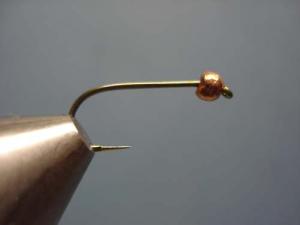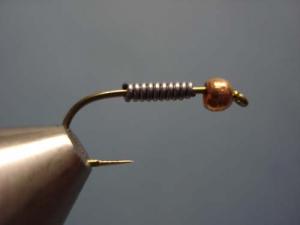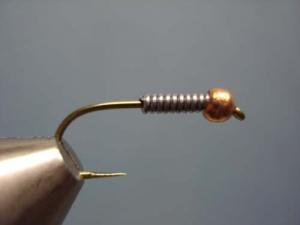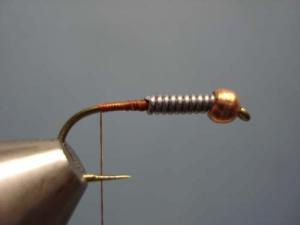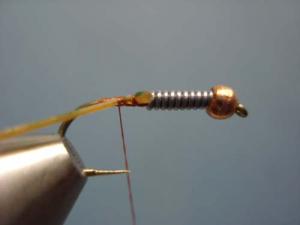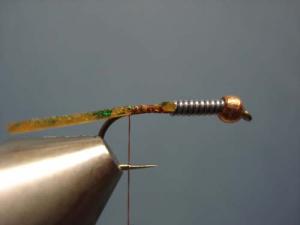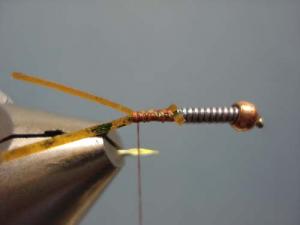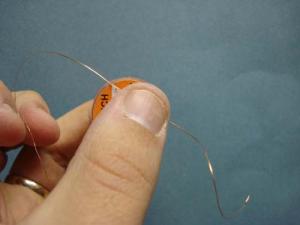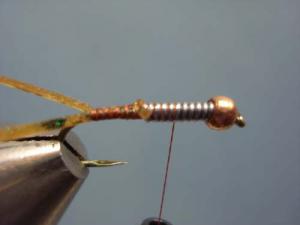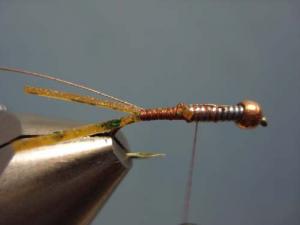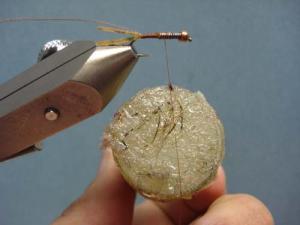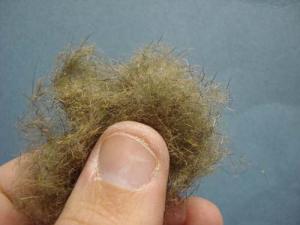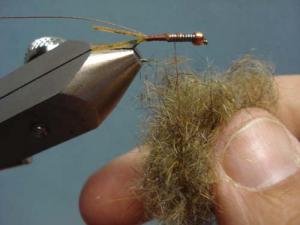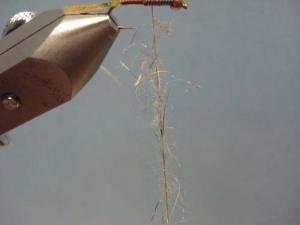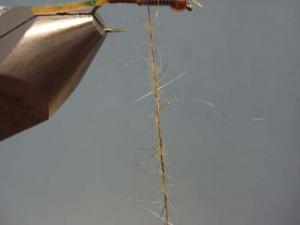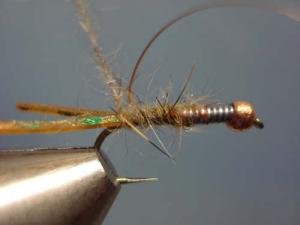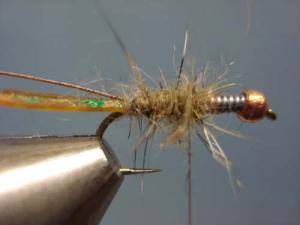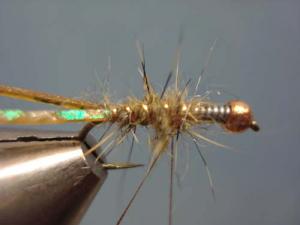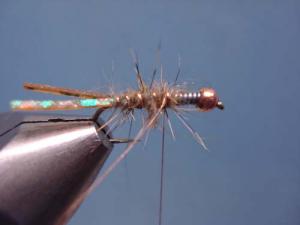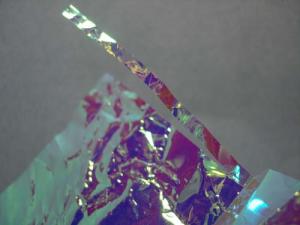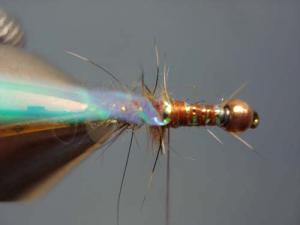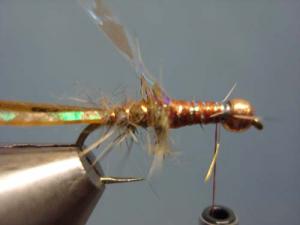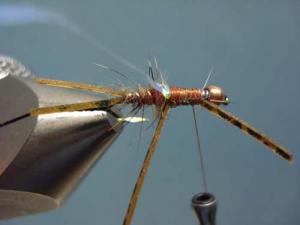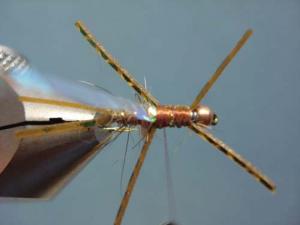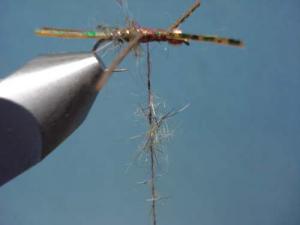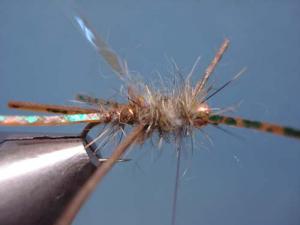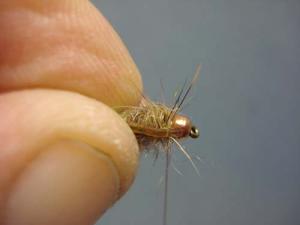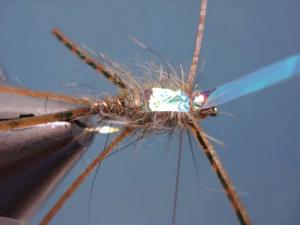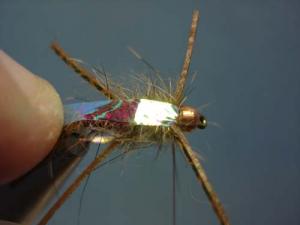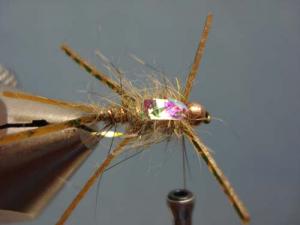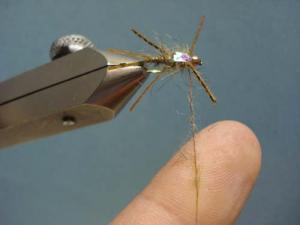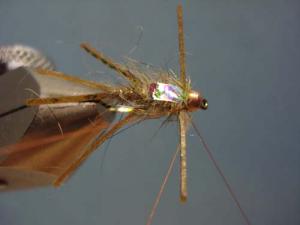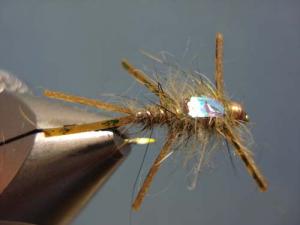LW's Hoover
Fly and Photos by Loren Williams
This is yet another one of "my" patterns that offers nothing new by way of material or technique. So obviously based on the venerable Gold-Ribbed Hare's Ear or Hare and Copper that I had trouble even renaming this fly, but for sake of communication and the fact that there are indeed some differences I've elected to call it the Hoover.
The Hoover has been one of my top-producers for the past 3 years, since it's conception. Here is it's story:
I was training on a local small stream a number of months after my exposure to competition fly-fishing as Team USA's Fly Tier. That selection had provided me with the chance to travel with the Team to the 2005 World Championships in Lyksele, Sweden. There, I learned about European nymph fishing tactics and some of the theory behind fishing weighted flies. With the desire to earn a place on the team burning within me, I set about my training for the various Regional competitions I would need to participate in, in order to get selected to the team.
On this particular day I was working on my upstream nymphing (al a Joe Humphreys) on a section of very accessible and shallow riffle/run water. This stream is very fertile, and influenced heavily by springs and seeps. As typical with such streams, the bottom had a healthy blanket of vegetation. I was doing OK, but I felt as though the fish were keyed on something I was not prepared to offer. Keep in mind that I was now fishing true to FIPS-Mouche limitations (no strike indicators, no split shot, barbless hooks, etc...) and I was learning how to adjust. Putting theory into practice.
A closer look at the stream under me revealed a number of fresh, good-sized stonefly shucks adhered to the rocks. BINGO! However, every large weighted fly I had immediately dropped through the shallow water and into the green "stuff" on the bottom. So, I had an idea of what was missing but I could not find a way to put it into action. All of my other large stonefly and nymph imitations were tied weightless and did not get deep enough-after all, I used to use split shot to adjust for the ever-important depth factor. I needed to fix this dilemma.
At home that day I started to think. I could tie my usual stoneflies, but with more weight-or I could try to find a pattern that worked for stoneflies, and all other nymphs in that circumstance (rather shallow, yet heavy water). I far prefer a "does-all" pattern over a specific imitation when at all possible. Taking from the teachings of my Polish friend Vladi about how materials affect sink rate, I opted to try using a bushy dubbing to soften the sink rate of a big weighted fly, a Hare's ear.
The first attempts worked in spades. The fish would hammer at the weighted Hare's Ears I threw-it's weight punched it through the surface but it's fuzzy body delayed the rate at which it sank to keep it in the productive zone, and off the bottom, for a much greater amount of time than other patterns.. That part of the problem was solved, but I thought I could improve on the pattern and make it better for pressured fish. I like Fox Squirrel dubbing because it's a good deal darker in the water than Hares Ear and much spikier. From there the pattern evolved to using rubber legs and tails for pronounced motion and a hot spot in the form of a brilliant flash wing case. Eventually I settled on copper beads and ribbing since that color throws far less light that does gold, which may be too much flash when paired with the wing case.
The true test of this fly came in October of 2006 on the Kings River in the California Sierra's at the West Coast Team USA Regional Qualifier. That pattern gave me a 1st and 2nd on my very difficult river beats, allowing me to qualify for the 2007 National Championships. Between then and now, this fly has proven itself time and again when working fish in that very difficult type of water when too heavy and too light means no fish.
MATERIALS
Hook: TMC 100 SPBL (#10-#14)
Bead: Copper
Weight: Round Lead Wire
Thread: Brown
Tail: Sili LegsRib: Oval Copper Tinsel
Abdomen: Fox Squirrel (from the back; blend-in Antron as an option)
Wing Case: Mirage Sheeting
Legs: Sili Legs
Click photos to enlarge!
